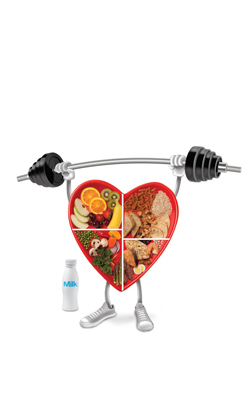
Adolescence is the period between childhood and adulthood. It is a critical period of growth and development as the rate of growth is rapid and takes place in such a way that it becomes difficult to accept. The period between 13 to 19 years (teen-age) is significant due to the over all development
such as Physical, Social, Mental and Emotional that takes place. The teenager becomes more independent and he/she starts to behave like an adult.
Boys and girls become sexually mature at this age. Sexual maturity is characterised by the development of Secondary sexual characters like the onset of menstruation in girls and changes like breaking of voice, moustache and beard growth in boys.
For girls, we can find the changes from 10 to 11 years but they might start as young as 8 years or as old as 13 years. In girls it starts at an earlier stage than boys.
Prior to puberty, nutrient needs are similar for boys and girls. It is during puberty that body composition and biologic changes (eg, menarche) emerge which affect gender-specific nutrient needs. Nutrient needs for both males and females increase sharply during adolescence.
Nutritional requirements are high due to skeletal growth, muscular development and increase in blood volume. The need for carbohydrate, protein, Vitamines, aminoacides and minerals calcium, iron and zinc is increased. Calcium is required for skeletal growth. Poor nutrition can result in deficiency diseases in adulthood such as low stamina, depression, poor posture, hair fall and low concentration in studies.
The adolescents especially the girls may be over enthusiastic about controlling the body weight. They may skip meals or consume an unbalanced diet to maintain an ideal body weight.
The peer group starts influencing the adolescence as they spend most of their time outside home with friends more than with family. Fast food joints providing high calorific foods are usually frequented which results in problems related to malnutrition.
Some of the negative eating habits generate due to-
Advertisements which appear in newspapers, magazines, TV and radio have a tremendous influence on the dietary pattern of the adolescents.
Advertising agents usually engage youngsters as models for soft drinks, chocolates and convenience foods in order to attract the attention of adolescents.
TV viewing habits are also related to adolescent’s health. It leads to sedentary life styles devoid of any exercise. While watching TV, most adolescents consume high calorie foods, thus resulting in obesity. It is necessary to include foodstuffs from all the basic food groups to make the diet balanced.
Some people tend to consume food unnecessarily even if not hungry. This unhealthy method is also said to be a negative eating habit.
The typical dietary habits of the adolescents may be short lived. They may eventually come back to a sound dietary pattern after trying out the new foodstuffs along with the peer group.





